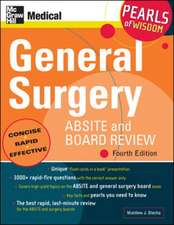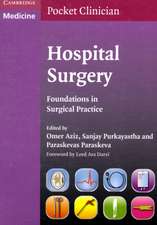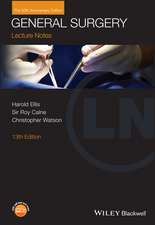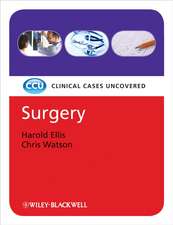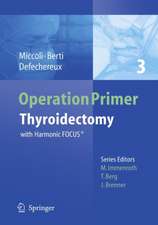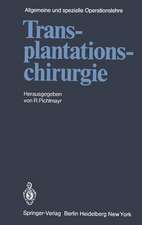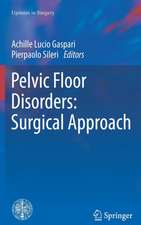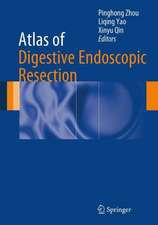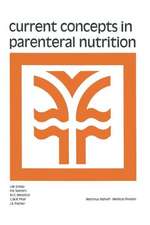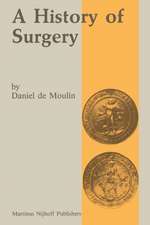Organ Preservation: Basic and Applied Aspects A Symposium of the Transplantation Society
Editat de D.R. Peggen Limba Engleză Paperback – 17 feb 2012
Preț: 377.52 lei
Preț vechi: 397.38 lei
-5% Nou
Puncte Express: 566
Preț estimativ în valută:
72.25€ • 74.97$ • 60.39£
72.25€ • 74.97$ • 60.39£
Carte tipărită la comandă
Livrare economică 17-31 martie
Preluare comenzi: 021 569.72.76
Specificații
ISBN-13: 9789401162692
ISBN-10: 9401162697
Pagini: 456
Ilustrații: XXI, 433 p.
Dimensiuni: 155 x 235 x 24 mm
Greutate: 0.64 kg
Ediția:Softcover reprint of the original 1st ed. 1982
Editura: SPRINGER NETHERLANDS
Colecția Springer
Locul publicării:Dordrecht, Netherlands
ISBN-10: 9401162697
Pagini: 456
Ilustrații: XXI, 433 p.
Dimensiuni: 155 x 235 x 24 mm
Greutate: 0.64 kg
Ediția:Softcover reprint of the original 1st ed. 1982
Editura: SPRINGER NETHERLANDS
Colecția Springer
Locul publicării:Dordrecht, Netherlands
Public țintă
ResearchCuprins
I. Basic Reviews.- 1 Energetics and mitochondria.- 2 Membrane functions.- 3 Biological significance and therapeutic potential of prostacyclin.- 4 A free radical approach to tissue injury.- 5 Endothelial cell function and organ preservation ex vivo.- 6 The principles of organ storage procedures.- II. Effects of Ischaemia and Anoxia.- 7 Recovery of renal function in the rat after warm ischaemia: functional and morphological changes..- 8 The dynamics of regional blood flow after ischaemic trauma of the rat kidney.- 9 Renal function impairment in swelling with and without anoxia.- 10 Prostacyclin and the ischaemic kidney.- 11 Kidney blood flow and microcirculatory changes after autologous kidney transplantation.- III. Biochemical and Pharmacological Aspects of Hypothermia.- 12 Future prospects in organ preservation.- 13 Tissue pH changes in renal preservation.- 14 Study of human kidneys prior to transplantation by phosphorus nuclear magnetic resonance.- 15 Effects of hypothermia on anabolic and catabolic processes and on oxygen consumption in perfused rat livers.- 16 Mechanism of loss of mitochondrial functions during hypothermic storage of kidneys.- 17 Depletion of CoA in dog kidneys during hypothermic perfusion.- 18 Renal viability testing during preservation by metabolic parameters.- 19 Hibernatory animals as a model for hypothermic organ preservation.- 20 Pharmacological factors in organ preservation.- 21 Effect of chlorpromazine on the contractile function and metabolic status of continuously perfused and ischaemic hearts.- IV. Preservation by Initial Perfusion and Hypothermia.- 22 Flush preservation.- 23 The effect of cooling rate in flush preservation of rabbit kidneys.- 24 Washout of red blood cells from kidneys damaged by warm ischaemia.- 25 Comparative evaluationof a new low ionic strength, hyperkalaemic flush solution.- 26 Hypothermic preservation of the rat pancreas.- 27 Deuterium oxide (D2O) for organ preservation.- 28 Retrograde oxygen persufflation - a technique for preservation of ischaemically damaged organs.- V. Preservation by Continuous Perfusion.- 29 Kidney preservation by continuous perfusion.- 30 Continuous perfusion and transplantation of rat kidneys.- 31 Cold storage and machine preservation of kidney: studies with the isolated rat kidney.- 32 Light microscopy findings in intermediate term kidney preservation.- 33 Five-day preservation of canine kidneys using a preservation machine.- 34 Lysosomal enzyme release during successful 5-, 7- and 8-day canine kidney storage.- 35 Aerobic and anaerobic perfusion of canine kidneys with a new perfusate.- 36 The use of oncotic support agents in perfusion preservation.- 37 Intermediate ex-vivo and in-vivo perfusion to prolong hypothermic kidney preservation up to 6 days.- 38 Is normothermic preservation an alternative to hypothermic preservation?.- 39 Measurement of tissue P02 during kidney perfusion with Fluosol®-43.- 40 Liver preservation in the rat.- 41 The effect of donor pretreatment on tubular function of the preserved canine allograft.- 42 Xenobanking.- VI. Preservation of Cadaver Kidneys.- 43 Factors influencing primary function in kidney transplants from brain-dead donors.- 44 Can immediate function of a cadaver renal transplant be predicted?.- 45 Factors of consequence for graft survival: a statistical analysis.- 46 Early and long-term function of cadaveric kidneys preserved by ice storage after flushing with Collins’ solution.- 47 The effect of dopamine administered to kidney graft recipients.- VII. General Discussion.- 48 Pretreatment.- 49 Initial perfusion.-50 Hypothermic preservation.- 51 Experimental models.- VIII. Cryopreservation.- 52 Perfusion of canine kidneys with dimethyl sulphoxide; techniques and toxicity.- 53 Prevention of toxicity from high concentrations of cryo-protective agents.- 54 Kidney preservation with Me2SO- and sucrose-containing solutions.- 55 Investigation into subzero non-freezing storage of rabbit kidney.- 56 Survival of hepatocytes upon thawing from - 196°C: functional assessment after transplantation.- 57 The effect of cryoprotectant concentration on freezing damage in kidney slices.- 58 The mechanism of cryoinjury in glycerol-treated rabbit kidneys.- 59 Rabbit kidney function in vitro following cooling to -20°C with glycerol or dimethyl sulphoxide.- 60 Prospects for organ preservation by vitrification.- 61 General discussion of cryopreservation.

